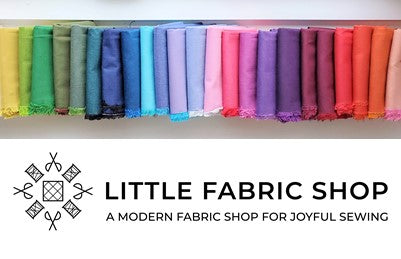How to Pick the Right Needle for Your Project

If you love to sew by hand, it is important to know how to pick the right needle for your project. There are many different types of needles out there, all with different qualities that can affect the hand sewing process.
The Advantages of Hand Sewing
You may be wondering why someone would want to use hand sewing at all when sewing machines make the work so much faster. Hand sewing has been around for over 20,000 years, and there are many advantages to this craft! With just a needle and some thread, you can take your sewing with you anywhere you go. And you’ll always be ready to mend torn clothing or fix a button when you’re out and about. Hand sewing is very affordable, and it can be much easier for beginners.
Hand sewing also has an advantage over using a sewing machine when it comes to detailed work. When you need your stitches to be perfectly precise or delightfully freeform, you’ll need to pick up a needle and thread.
But which type of needle should you use though? Read on to learn how to pick the right needle for your project!
Types of Needles
The most important choice you will make is what type of needle to use. Needles can vary in length and thickness, as well as in the size and shape of the eye. These small differences can impact how the needle works, so let’s go over some of the different types of needles.
Sharps
A sharps needle is the standard multi-purpose needle for hand sewing. This medium-length needle has a sharp point and is a good go-to choice for many sewing projects.
If you’re not sure which needle to use for your project, this is usually a safe choice, but consider using other types of needles for more specialized projects. Also, remember that because the point on this needle is so sharp, you should be careful when working with very thin fabrics because a sharps needle may be able to slice right through them.
Tapestry
This type of needle is ideal for needlepoint projects. It has an extra large eye so you can fit more than one strand of thread, thicker types of thread, or even yarn! You can recognize a tapestry needle by the thickness of its needle body and its blunt point. Besides needlepoint, a tapestry needle can also be used with loose weave fabrics or for seaming hand knits.
Embroidery
Embroidery needles (sometimes called crewel needles) have a lot in common with sharps needles: both types are medium-length and are equally sharp. The difference is in the eye. An embroidery needle eye is longer than a sharps eye, so you can fit embroidery thread through it more easily. Use this needle for embroidery projects, smocking, or when you are using a thicker type of thread.
Quilting Betweens
A quilting betweens needle is short and has a small, round eye. This needle is best for quilting or working with heavier fabrics. Use it to make your stitches more precise, especially when doing detail work.
Ballpoint
A ballpoint needle is distinguished by its slightly rounded tip. This “ballpoint” is there so that the needle can go through the threads of knit fabrics without snagging them. This needle is useful for working with knit or stretchier fabrics.
How to Pick a High-Quality Sewing Needle
Now that you know how to pick the right type of needle for your project, there are some other qualities you may look for when selecting your needle. For example, all sharps needles are medium-length and sharp, but some manufacturers may add some extra features to their sharps needles to make them easier to use.
Needles that are black-plated are resistant to rust and last longer than average needles. Some high-quality needles are also polished along the axis, which means they are easier to pierce through the fabric. Needles can also be ground vertically. This reduces the amount of friction the needle has against the fabric.
If you’re still worried about picking the right needle for your project, you can always buy an assortment pack of needles! You can experiment with different types until you find the one that works best for you. Many of these assortments are color-coded, so you don’t need to worry about telling the needles apart!
Other Helpful Hand Sewing Tools
If you know how to pick the right needle for your project but are still running into problems with hand sewing, there are a few other tools that can help.
If you are using a sewing needle with a very small eye (or you’re using thick thread), you may have a hard time threading the needle. If this happens to you frequently, you may want to pick up a needle threader! These handy tools make threading needles a snap.
If you find your needles get dull very quickly, then a needle sharpener can prolong the life of your needles! Or, if you have a hard time keeping track of your needles, a magnetic needle minder may be just what you need. And of course, make sure you are always using a thimble when you are hand sewing to keep your fingers safe.
Congratulations--you now know everything you need to know about how to pick the right needle for your project! You are practically a needle-picking expert! Now you can get back to the fun part: working on your favorite hand sewing project. You can learn more tips and tricks like these in The Little Fabric Shop’s blog.




